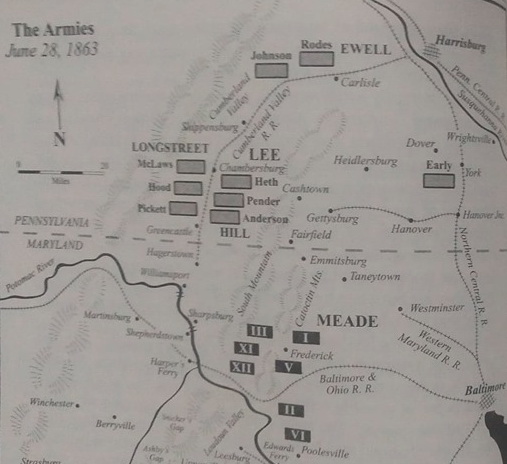Attack on the Susquehanna
In yet another series of late-night musings, I was rehashing the many prior ALT Hx scenarios that could have changed the outcome of the epic clash at Gettysburg. I thought that I had just about shuffled thru all variants, but then I found another: WHY was Ewell so far north at Carlisle with 2 full divisions and why had Lee split his corps by sending Early towards York?
I was under the general impression that neither of these ‘campaigns’ had been more than a glancing blow to those cities. So I went back and re-read sections of Stephen Sears book. He addresses in depth that mostly northerly (and easterly) campaign. Apparently, Lee had told Ewell to make a real run at Harrisburg, the capitol of Pennsylvania. Early was to support that attack by entering York and disrupting the rail line that came up from Baltimore. I was again under the wrong impression that Ewell had only just reached Carlisle when Lee re-called him to Gettysburg. But I stand corrected. Per Sears, that portion of the campaign had begun in Chambersburg on the 25th of June. Early received his marching orders that evening and set off east, passing thru Gettysburg on the 26th and actually entering York on the 27th. He also dispatched a brigade and some cavalry to move east a few miles and approach the town of Wrightsville, but they found the bridge across the Susquehanna heavily fortified and withdrew without a fight.
At the same time, Ewell with Rodes’ and Johnson’s divisions were threatening the Union supply base at Carlisle Barracks. A contingent of his cavalry scouted all the way over to Harrisburg only to find that the militia a small group defending the bridge. By the time the first infantry approached within 3 miles of the bridge, Ewell had received the recall dispatch and was aligning his troops for the return march to Gettysburg.
[See Section 22a Lee’s Objectives for a more complete discussion of the encounter at Harrisburg.]

Edward Coddington’s book The Gettysburg Campaign: A study in Command echoes the above facts. He also notes that in his published report of the invasion of the north, Lee never clearly states his intentions or expectations at Harrisburg.
The other factor that Coddington introduces into the equation is the report by the civilian spy Harrison that Hooker’s Army of the Potomac was much farther north, moving to counter Lee’s invasion, than Lee had anticipated. Although Harrison’s information was uncorroborated, it seemingly prompted Lee to consolidate his forces at Gettysburg on 1 July.
It does seem as though it was the rather startling revelations of Harrison that prompted Lee to recall Ewell and not any stalwart defense of the city by the Pennsylvania volunteers.
